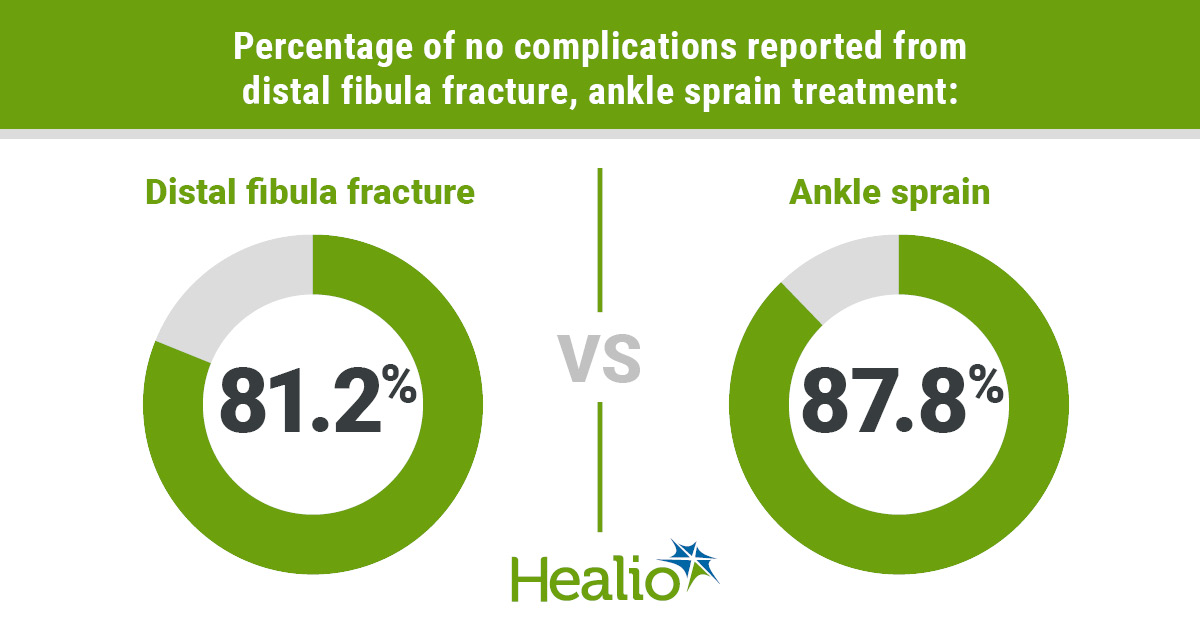Cast treatment may increase complications among children with distal fibula fracture, ankle sprain
Study results showed a large variation in the treatment of ankle sprains and Salter-Harris 1 distal fibula fractures by pediatric orthopedic surgeons, with increased complications found with cast treatment and continued pain reported as a common complication for both treatments.

Jennifer J. Beck, MD, and colleagues surveyed 1,400 members of the Pediatric Orthopaedic Society of North America to identify treatment complications and rare complications of ankle sprains and non-displaced Salter-Harris 1 distal fibula fractures in skeletally immature patients.
Of the 16.4% of POSNA members who completed the survey, results showed 81.2% reported no complications from Salter-Harris 1 distal fibula fracture treatment and 87.8% reported no complications from ankle sprain treatment. Researchers found 54% of respondents preferred controlled ankle movement (CAM) boot immobilization and 34% preferred cast immobilization for Salter-Harris 1 distal fibula fracture treatment. For ankle sprain treatment, 45% preferred the CAM boot, 18% preferred a stirrup brace, 14.5% preferred an over-the-counter brace and 11% preferred a cast, according to results.
Researchers noted 9.6% and 5.2% of respondents reported having seen a cast complication in Salter-Harris 1 distal fibula fracture treatment and ankle sprain treatment, respectively, compared with 0.4% reported having seen a brace complication in both Salter-Harris 1 fractures and ankle sprains. Results showed other reported complications with Salter-Harris 1 fractures included persistent pain/reflex sympathetic dystrophy, distal fibular growth arrest, infection, nonunion and recurrent fracture. Researchers noted growth arrest and continued pain/reflex sympathetic dystrophy as other reported ankle sprain complications.

“Although complications are rare from this injury, POSNA members do report complications such as late displacement, nonunion, growth arrest and most commonly chronic pain, possibly resulting in [complex regional pain syndrome/reflex sympathetic dystrophy] CRPS/RSD,” Beck told Healio Orthopedics. “The most common complication related to treatment was cast related complications, indicating choice of immobilization (cast vs. removable boot) may influence complication rate and patient satisfaction. A POSNA-funded randomized study on the effect of cast vs. removable boot is currently underway to determine optimal treatment of these injuries.” – by Casey Tingle
Reference:
Beck J, et al. ePaper 281. Presented at: American Academy of Orthopaedic Surgeons Annual Meeting; March 24-28, 2020 (meeting canceled).
Disclosure: Beck reports she is a board or committee member of POSNA and of Pediatric Research in Sports Medicine.

